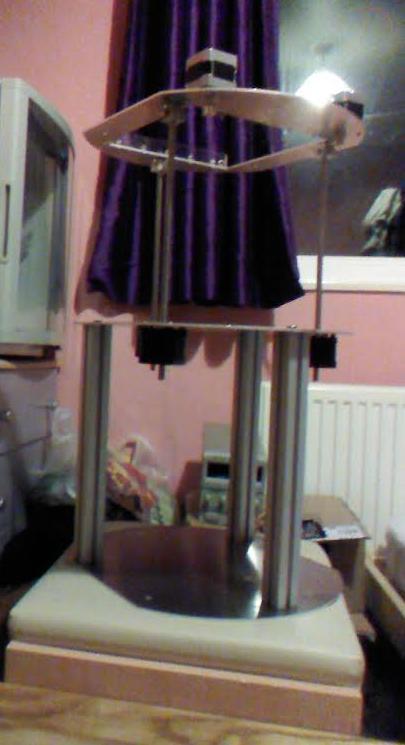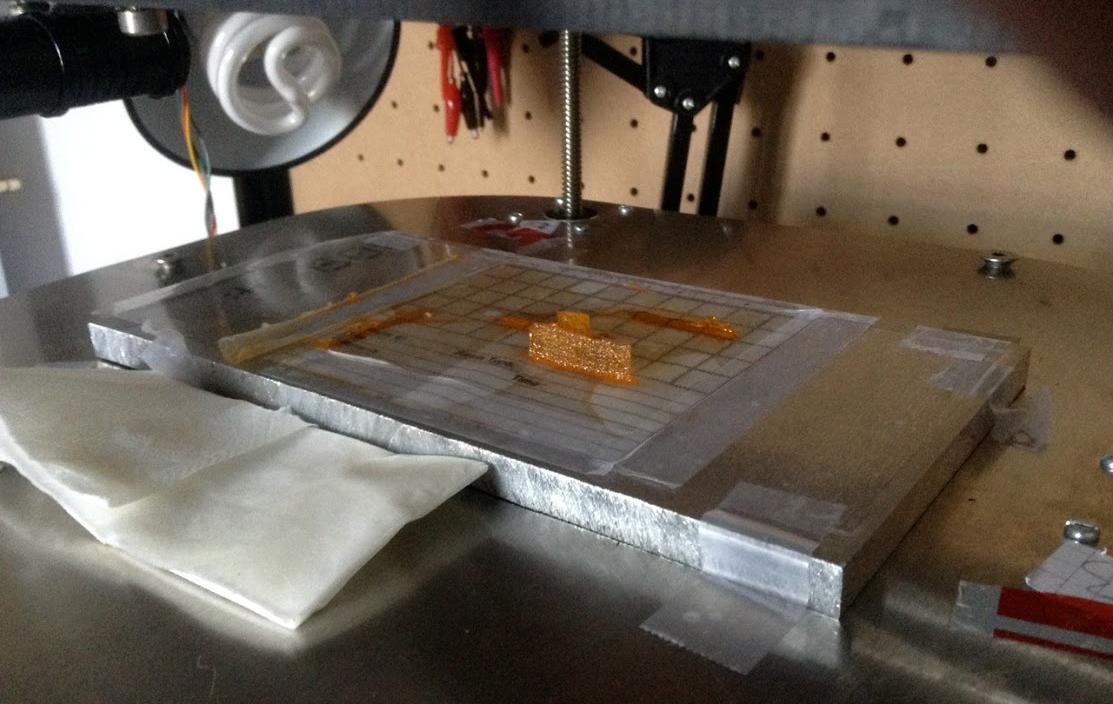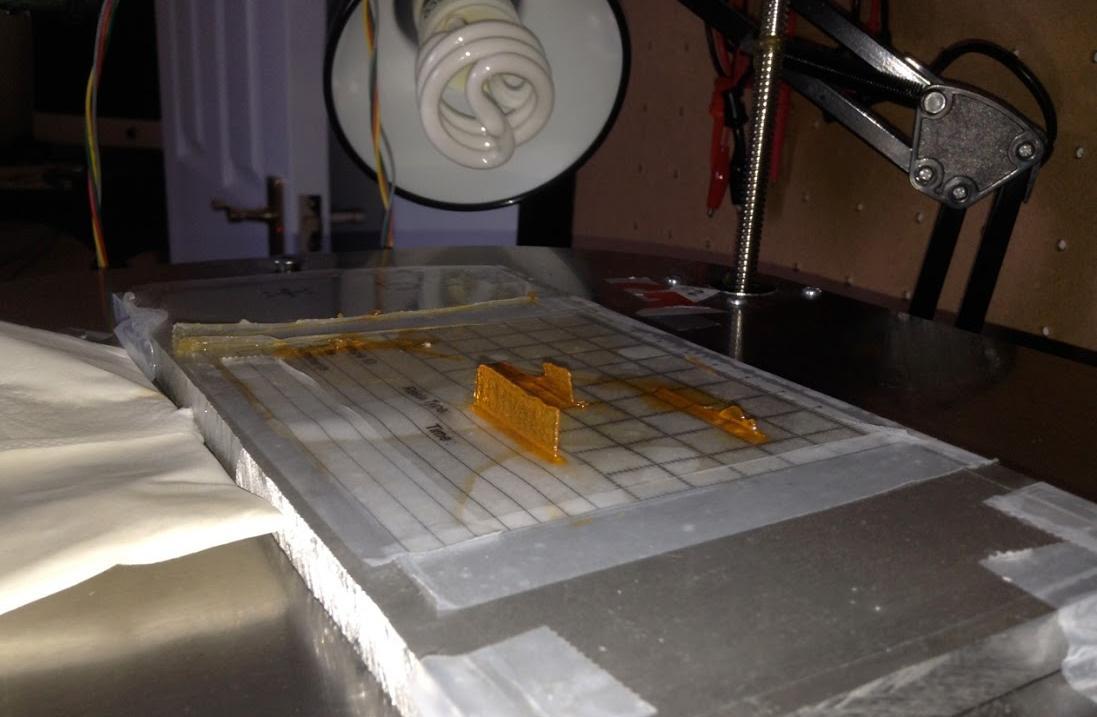There are two 3D printing technologies that are capable of producing products that are almost indistinguishable from those created using traditional manufacturing techniques. These would be Selective Laser Sintering (SLS), and Polymer Jetting technology. The former is widely used by 3D Systems in their industrial level machines, which can cost in the $500,000+ range. The latter is currently used by Stratasys in their patented PolyJet technology, which is utilized in most of their industrial level 3D printers. These printers also cost in the 6-figure-plus range.
While these 3D printing technologies are some of the best out there, the price tags that are attached to them make it highly unlikely that you would find one of these machines in someone’s home or garage.
One London man, named David Feintrenie is looking to change this though. Feintrenie, who was studying towards getting his master’s degree just a year ago, one day came across an article about 3D printing, and quickly became enamored by the technology.
“It piqued my interest in the technology so I started digging for information online and hung around the makers’ community,” Feintrenie told 3DPrint.com. “A month later I decided to drop out of graduate school so I could use the tuition money on this project. I knew nothing back then so the first thing I did was buy a Reprap and play around with it. Early on, I realized the limitations of FDM and though it’s playing a major role in popularizing the technology, it won’t be able to reach consumer nirvana. So I turned my attention to something more versatile: polymer jetting”
Polymer jetting technology is not something you hear about too often because, like mentioned above, it is typically reserved for the large companies who are able to afford spending as much as you would pay for a house, on a 3D printer. This is not something that most of us can fathom.
“The theory is simple, explained Feintrenie. “You deposit material where you need and you shine UV light on it for curing. In practice, it’s much more complicated because you must deposit the exact amount of resin for the light to cure it 100%.”
If that UV light is too week for the amount of resin that you wish to cure, that uncured resin will cause the entire print to fail. This is why Feintrenie is performing a lot of experiments and asking experts in the field for their advice. “I can’t even count how many times I’ve experienced dripping, clogging or leakage with the print head,” he told us.
Stratasys and their PolyJet technology has definitely found a method for polymer jetting, that can create great prototypes as well as end-use parts, as I personally have seen first hand. “They have succeeded in building their machine in the most direct way,” said Feintrenie. “They use 4x Dimatix 100dpi heads — 2 for build material, 2 for support material — to jet high viscosity resin and cure it with 2 gigantic UV lamps on each side of the head. In short, they’ve took the most expensive off-shelf items to build a printer no one can buy.”
Stratasys certainly sells many of these machines, but they are mostly to large companies and corporations that either rent out time on these printers, or use them in the manufacturing or prototyping process of their products.
In order to create a polymer jetting 3D printer that is affordable and able to produce quality end results, Feintrenie took a different approach. For the deposition he uses a single nozzle piezo head, which he salvaged from an old wax printer. Instead of jetting the polymer resin in an array like that used in PolyJet machines, he only jets one line per swipe, thus he only needs a low power but focused laser to cure the resin. “I use a 405nm, 150mw DIY laser that I bought online,” he told us.
The rest of Feintrenie’s machine is pretty standard, as far as what we traditionally see within consumer level 3D printers. It uses Core XY to move the head module, and for the Z-axis he is currently experimenting with non-captive steppers so that when the 3D printer is finished printing, it can retract.
 When we asked him if he has any concerns with interfering with Stratasys’ patents, he told us that he believes that his technology is sufficiently different, and that it does not “walk over” any Stratasys patents. He felt confident that he should have no problems, and said that he is ready to fight any issues that are brought up.
When we asked him if he has any concerns with interfering with Stratasys’ patents, he told us that he believes that his technology is sufficiently different, and that it does not “walk over” any Stratasys patents. He felt confident that he should have no problems, and said that he is ready to fight any issues that are brought up.
As for the cost of his machine, it is no where near the 6-figures that current polymer jetting 3D printers will cost you. In fact, it is lower than the price that a high quality FDM 3D printer would cost. It cost Feintrenie only $1,500 to produce, and a great deal of that is attributed to the $900 that the head cost. Feintrenie wants to develop the technology further, to the point where it can sufficiently surpass the results put out by today’s current consumer-level printers, and approach that of current PolyJet printers. He still has a few obstacles to overcome. Once he is done, he plans to bring his new 3D printer to market. Currently the machine is still in an “experimental” stage of production, but he truly believes that he will succeed in creating the first affordable polymer jetting 3D printer.
Let us know what you think of Feintrenie’s new 3D printer, and the concept that he uses in creating it. Discuss in the affordable polymer jetting 3D printer forum thread on 3DPB.com.
Subscribe to Our Email Newsletter
Stay up-to-date on all the latest news from the 3D printing industry and receive information and offers from third party vendors.
You May Also Like
Gorilla Sports GE’s First 3D Printed Titanium Cast
How do you help a gorilla with a broken arm? Sounds like the start of a bad joke a zookeeper might tell, but it’s an actual dilemma recently faced by...
Nylon 3D Printed Parts Made More Functional with Coatings & Colors
Parts 3D printed from polyamide (PA, Nylon) 12 using powder bed fusion (PBF) are a mainstay in the additive manufacturing (AM) industry. While post-finishing processes have improved the porosity of...
$25M to Back Sintavia’s Largest Expansion of Metal 3D Printing Capacity Since 2019
Sintavia, the digital manufacturing company specializing in mission-critical parts for strategic sectors, announced a $25 million investment to increase its production capacity, the largest expansion to its operations since 2019....
Velo3D Initiates Public Offering in a Bid to Strengthen Financial Foundations and Drive Future Growth
Velo3D (NYSE: VLD) has been among a number of publicly traded 3D printing firms that have attempted to weather the current macroeconomic climate. After posting a challenging financial report for 2023,...



































